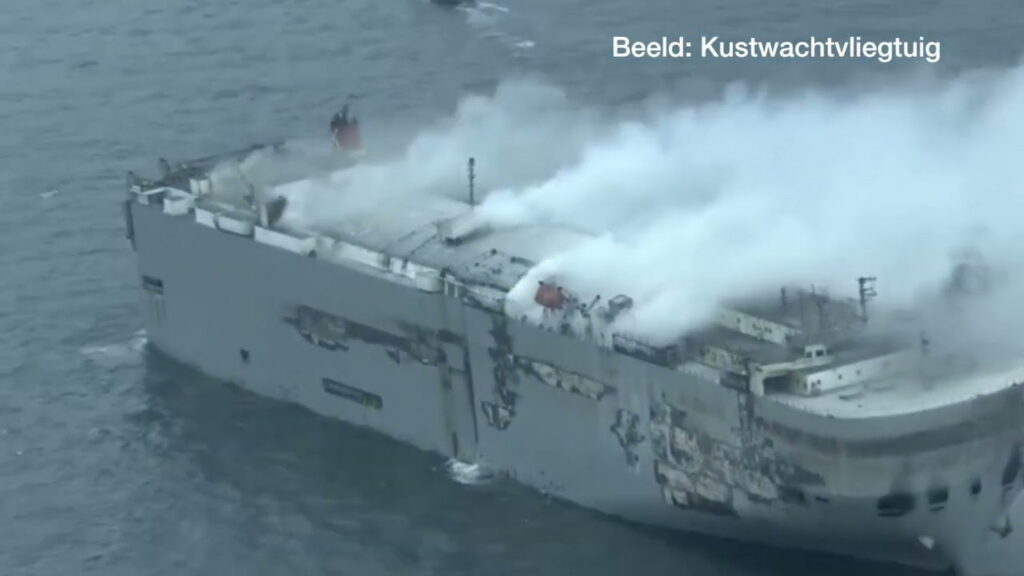What’s harder than putting out an electric vehicle battery fire? Putting out nearly 500 electric vehicle battery fires aboard a vessel that could sink if things go poorly. That’s a plausible scenario for the crews fighting fires on the Fremantle Highway cargo ship right now.
We told you earlier in the week about how officials suspect that a burning electric vehicle caused the fire aboard the Fremantle Highway.
The conflagration killed one crew member and caused others to jump overboard in fear of their own lives. At the time of our initial reporting, authorities said that some 25 electric vehicles were onboard.
More: Damaged Nikola Electric Truck Reignites A Month After Initial Fire
Today, Bloomberg is reporting that, according to the operator, there are 498 electric vehicles on the Fremantle Highway. That figure is part of the total of 3,783 vehicles on board. Both Mercedes-Benz and BMW each have hundreds of cars on board.
One battery fire can be tough to put out as they tend to ignite more quickly and burn hotter and longer than a conventional gasoline-based fire. Should these EVs burn up in a domino-like fashion it could pose a gigantic problem for firefighters. At the same time, fighting the fire itself poses another safety risk, namely, water.
As crews battle the blaze with water they could potentially shift the weight balance of the ship. Whatever they’ve been doing to this point seems to be working though as temperatures on the boat are down today, Friday, when compared to earlier this week. The smoke is diminishing as well so crews are able to make additional headway.
Technically speaking, the actual cause of the initial fire on the Fremantle Highway is yet undetermined. It’s nevertheless clear from numerous incidents that lithium-ion battery fires are an ongoing problem both for people and for the transition to EVs. While it’s plausible that some sort of damage occurred to cause this fire, the optics look horrible for EVs in general.








